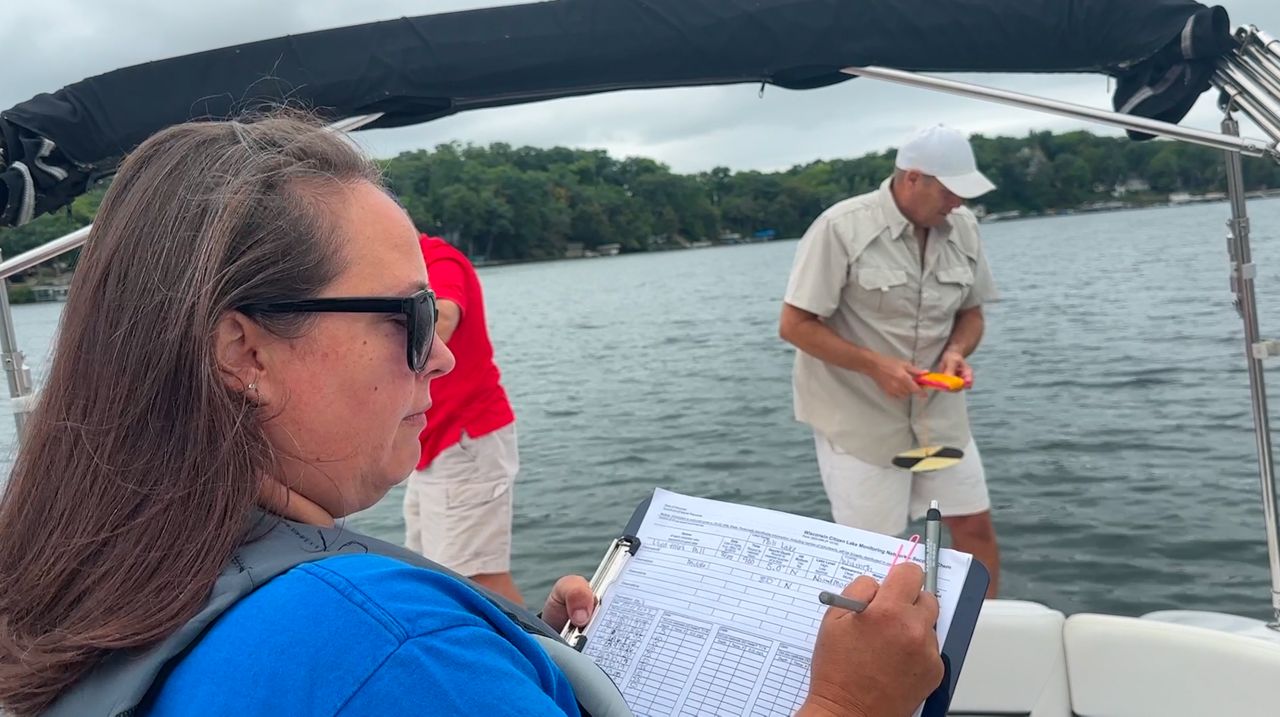LAUDERDALE LAKES, Wis. — The Citizen Lake Monitoring Network is helping the Department of Natural Resources (DNR) monitor the health of more than 800 lakes around Wisconsin.
Mark Curcio volunteers his time to collect water samples from Mill, Middle and Green lakes in Walworth County. He does this once each month during June, July and August.
“This water is then going to be siphoned off to give us the phosphorous and then we are also going to siphon out on a filter to get the chlorophyll amount that may be in the lake,” said Curcio.
After collecting the sample, Curcio pulled out a dissolved oxygen meter.
He used it to measure the level and temperatures of each lake at different depths.
Curcio said he joined the Citizen Lake Monitoring Network two years ago for one simple reason.
“I want to make sure the lakes stay healthy for future generations, so I’m doing my little part here to help. Hopefully, keep the lakes healthy and safe for everybody to use,” said Curcio.

Rachel Sabre is a water management specialist with the DNR. She recorded the data from the readings that Curcio collects.
Sabre said the Citizen Lake Monitoring Network has more than a thousand volunteers that send data to the DNR. She said they send the results back to give these volunteers more information about what’s going on with their local lakes.
“If there is a concern going on in the lake and they want to know more about what it is and why that problem is occurring and what they can do about it,” said Sabre. “Some lakes actually take it a bit further and use this monitoring data in planning to identify how to help reduce nutrients coming into the lake, how to deal with aquatic plant management and other issues that occurring on their lakes.”
Curcio said the lakes he monitors are doing fairly well.
“Because of the amount of use they get, they still stay very, very clean and clear being spring-fed,” said Curcio. “They’re very well maintained. The DNR has been very concerned about shore erosion and things like that, so people are responsible in a lot of ways in that regard.”
Curcio said it’s all about protecting the lakes that have given him and his community so much joy.
To learn more about the program, click here.



